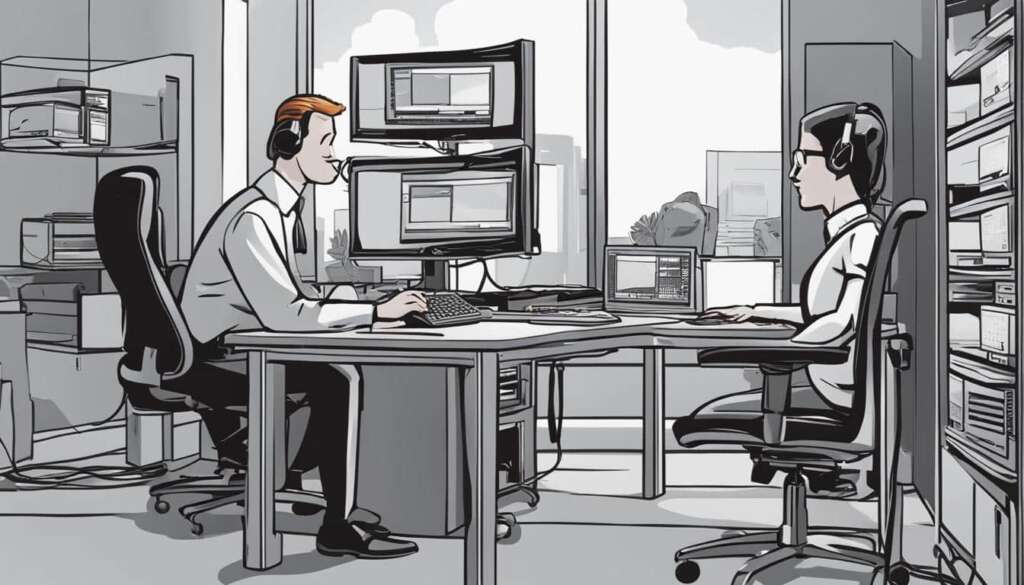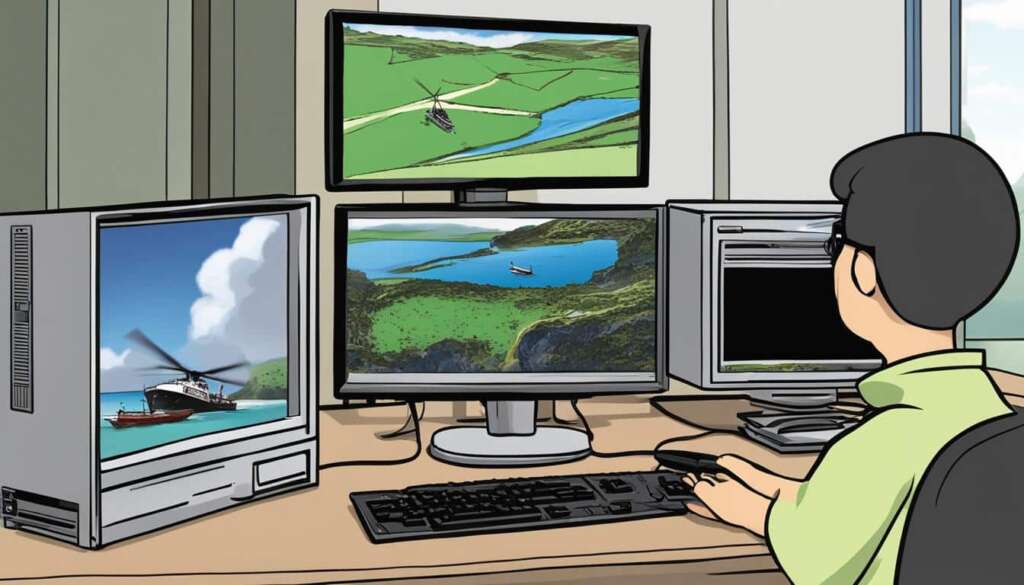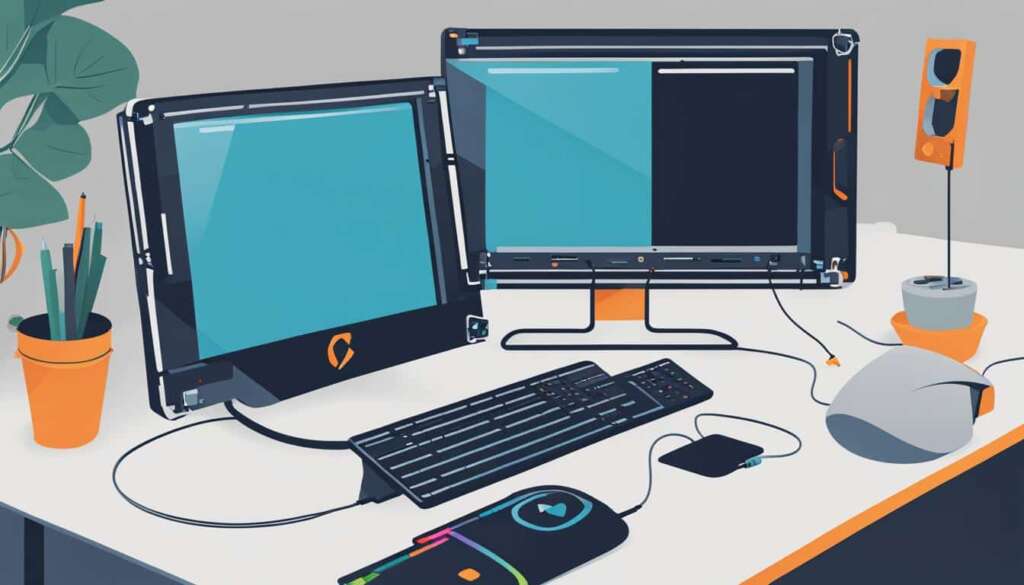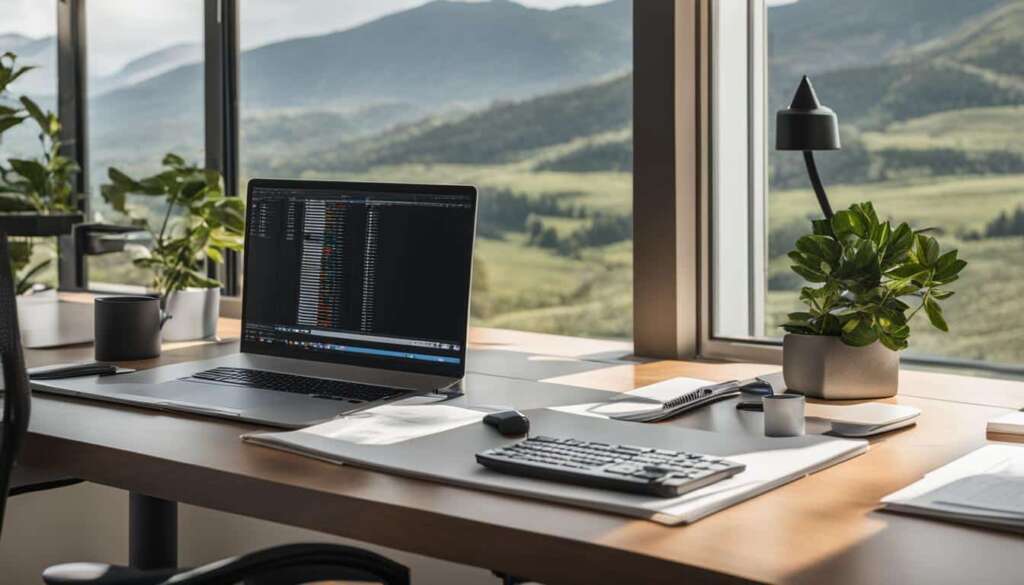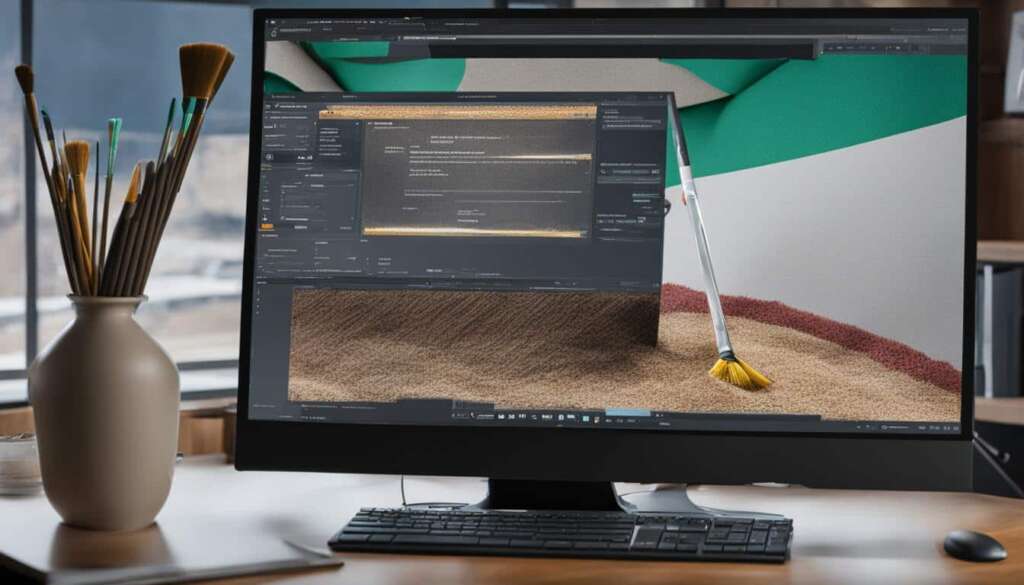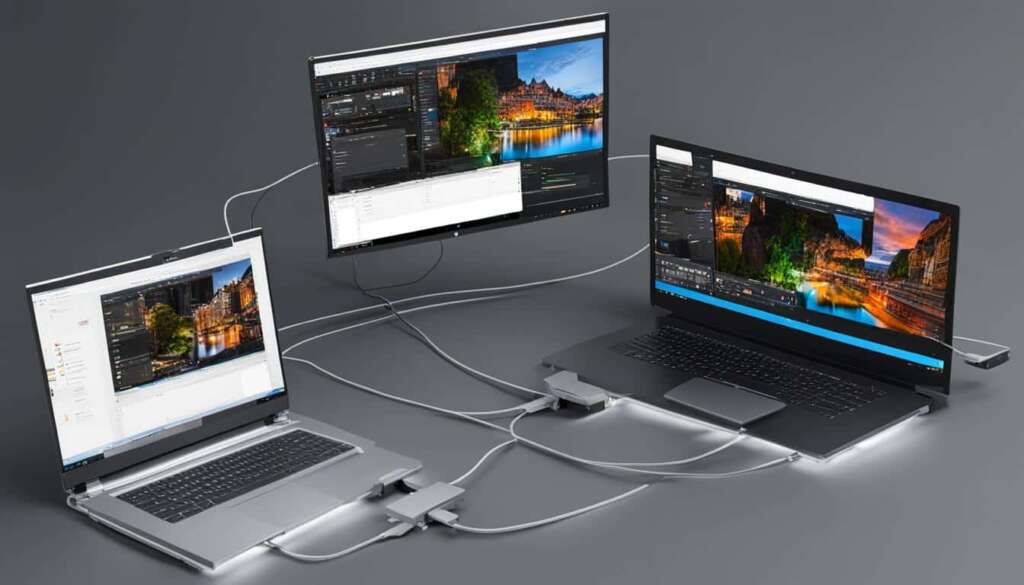Table of Contents
Connecting your computer to an external monitor is a straightforward process that can enhance your workspace setup. Before purchasing a monitor, it’s important to determine the available ports on your computer, such as VGA, DVI, HDMI, Thunderbolt, and USB. Choosing the appropriate cable or adapter based on these ports is essential.
Options include VGA adapters and connectors, DVI adapters and connectors, HDMI cables with different sizes (standard, mini, and micro), Thunderbolt, and DisplayPort connectors. Each has its own advantages and limitations, such as resolution and frame rates. Depending on your needs, you can select a cable that transmits either video or both video and audio.
Windows and Apple computers have slightly different steps for connecting and configuring multiple displays, but generally involve checking connections, selecting the appropriate display settings, and fine-tuning the alignment and resolution for optimal viewing.
It’s also possible to connect multiple monitors using adapters or converters if your computer has a combination of different ports. It’s recommended to use higher-quality cables like HDMI or DisplayPort for better display quality.
Stay tuned for the next section where we will discuss how to identify the components and plug in your PC for a smooth setup process.
Identifying the Components and Plugging in the PC
Before setting up your PC, gather all the necessary components including the CPU tower, monitor, keyboard, mouse, and cables. Position the CPU tower in a stable area with accessible backports for cable connections.
Connect the monitor cable to the corresponding port on the CPU tower, ensuring a secure connection. Plug in the keyboard and mouse to their designated ports, which are usually USB ports on the CPU tower or monitor. Connect the CPU tower and monitor to power sources, making sure the cables are not tangled.
If you have external devices like printers or scanners, connect them to the appropriate ports on the CPU tower. For internet connectivity, use an Ethernet cable for wired connections or ensure that the Wi-Fi adapter is installed and configured for wireless connections.
Turn on the power for the monitor, CPU, and other connected devices, and check for display on the monitor. Once the PC boots up, follow the on-screen instructions to configure settings such as language, time, and network connection. Install necessary software including the operating system, drivers, and applications to complete the setup.
A complete setup for plugging in a PC typically involves the following components:
| Component | Connection |
|---|---|
| CPU Tower | Connect all necessary cables including the monitor, keyboard, mouse, and power cables |
| Monitor | Connect the monitor cable securely to the corresponding port on the CPU tower |
| Keyboard and Mouse | Plug the keyboard and mouse into their designated USB ports on the CPU tower or monitor |
| External Devices | Connect printers, scanners, or other external devices to the appropriate ports on the CPU tower |
| Internet Connectivity | Use an Ethernet cable or ensure the Wi-Fi adapter is installed and configured |
| Power | Connect the CPU tower and monitor to power sources |
Best Practices for Setting Up and Optimizing Your PC
When plugging in a PC, there are some best practices to consider. It’s highly recommended to use a surge protector to protect your PC and connected devices from electrical surges. It’s also advisable to plug your PC into a grounded outlet to prevent electrical damage. Make sure all components are turned off and unplugged when connecting to avoid any risks of electrical shocks or shorts.
Wireless keyboards and mice can be set up at any time by following the manufacturer’s instructions for pairing. Installing the appropriate drivers is crucial for the proper functioning of hardware components and connected devices, so make sure to install them after plugging in the PC. Using an HDMI cable is recommended for higher-quality displays, though DisplayPort can be used for faster refresh rates.
Proper cable management and ventilation are important to ensure the longevity and performance of your PC. Regularly clean dust from the CPU tower and monitor to prevent overheating. Following these best practices will help you set up and optimize your PC for optimal performance.
FAQ
How do I connect my PC to a monitor?
To connect your PC to a monitor, determine the available ports on your computer, such as VGA, DVI, HDMI, Thunderbolt, and USB. Choose the appropriate cable or adapter based on these ports. Connect the monitor cable to the corresponding port on the CPU tower and ensure a secure connection. Turn on the power for the monitor and CPU, and check for display on the monitor.
What components do I need to plug in when setting up a PC?
When setting up a PC, you need to plug in the CPU tower, monitor, keyboard, mouse, and cables. Position the CPU tower in a stable area with accessible backports for cable connections. Connect the monitor cable to the corresponding port on the CPU tower. Plug in the keyboard and mouse to their designated ports. Connect the CPU tower and monitor to power sources. If you have external devices like printers or scanners, connect them to the appropriate ports on the CPU tower.
What are some best practices for setting up and optimizing a PC?
Some best practices for setting up and optimizing a PC include using a surge protector to protect your PC from electrical surges, plugging your PC into a grounded outlet, and properly managing cables and ensuring proper ventilation. It is also important to regularly clean dust from the CPU tower and monitor to prevent overheating. Installing the appropriate drivers and using higher-quality cables like HDMI or DisplayPort can also improve performance. These practices contribute to the longevity and optimal performance of your PC.

